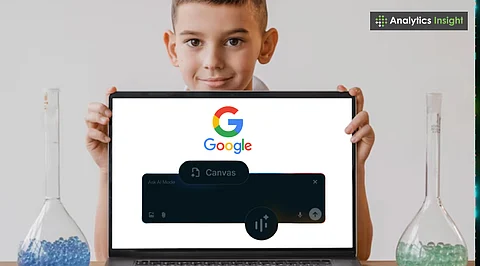

Google AI transforms static PDFs into interactive, real-time educational videos.
The new technology supports personalized and more engaging learning experiences.
This innovation signals a major shift toward AI-powered education systems.
The learning process has seen major changes lately. Old-school textbooks and boring PDFs are not the only options; thanks to artificial intelligence, learning has become more lively, interesting, and accessible.
Google has taken a big step forward in this direction by using technology to turn basic PDFs into interactive live video lessons with the goal of making learning a better experience.
PDFs have always been the preferred format for sharing educational content. They're easy to share, but effective in maintaining people's attention. Studying can be difficult without interesting videos or hands-on experience. However, Google AI is changing that by creating videos using PDFs, helping people understand and remember the concepts.
The system enhances engagement through the integration of audio narration, animations, and interactive assessments. Instead of conventional document review, users can watch animated segments and listen to easy explanations. By identifying key elements within the file, the system produces a captivating video summary that incorporates supporting visuals and text to improve comprehension.
Also Read: Revolutionizing Finance & Healthcare: The Architect Behind Secure, Smart Document Systems
Google's adaptive AI learning system personalizes content. By examining a user's background, preferences, and progress, the system generates videos designed to suit their skills and learning speed. So, if some students struggle with math, the AI might give them more examples on the subject and explain the working through a video.
Also Read: How to Start Learning Math for Data Science: A Simple Guide
Because it is made for student learning, the platform provides features to stop, rewind, and watch parts again if they need to, making learning easier.
Google’s AI breaks down barriers in education. For people having trouble with reading books, audio-visual content is a good alternative. Words on the screen, voice-overs, and picture explanations make it easier to comprehend.
The technology also has language support, letting users translate content into different languages. It also offers instant updates, meaning if teachers share new materials, the AI quickly converts them into updated videos. This is beneficial when it comes to subjects like science and tech, where information undergoes reforms all the time.
Teachers and students can also work together on the platform. They can add notes, highlights, and questions right on the video, making learning more social, even when not in the same room. This initiative lines up with Google's plan to make information accessible and useful for everyone.
While advanced technologies are great, they also have their downsides. Over-dependence may affect people’s ability to think on their feet.
Protecting user data is another important factor when using AI to personalize education. To get rid of these worries, leaders need to be transparent and let users control their own data, pushing AI as a helper for teachers, not a replacement.
Google AI is a big step for the future of education. As more schools start using digital tools, AI platforms will likely become normal. There may be a future where voice-based Q&A with the video, better coordination with classroom tools, and support for difficult subjects via simulations and games are possible.
The goal isn't to substitute teachers with technology but to give them better resources. AI, when properly implemented, can free up educators' time by automating routine work, allowing them to focus more on student engagement and personalized instruction.
Google AI has the potential to transform education. It turns boring PDFs into engaging videos, making learning easier. Many students can utilize it to learn better, irrespective of who they are or where they live.
1. What does Google AI do with PDF documents?
Google AI converts PDF files into interactive live videos with narration, visuals, and quizzes.
2. How does AI improve personalization in learning?
AI analyzes learner data to create content that matches individual learning pace and difficulty level.
3. Is this AI-based learning model accessible to all students?
Yes, it includes voiceovers, subtitles, and multi-language support to make learning inclusive.
4. Can teachers update video lessons using this AI tool?
Yes, new content can be uploaded and converted into updated videos in real-time.
5. What are the challenges of AI-based education tools?
Over-reliance on AI and data privacy concerns are key issues that need careful handling.
